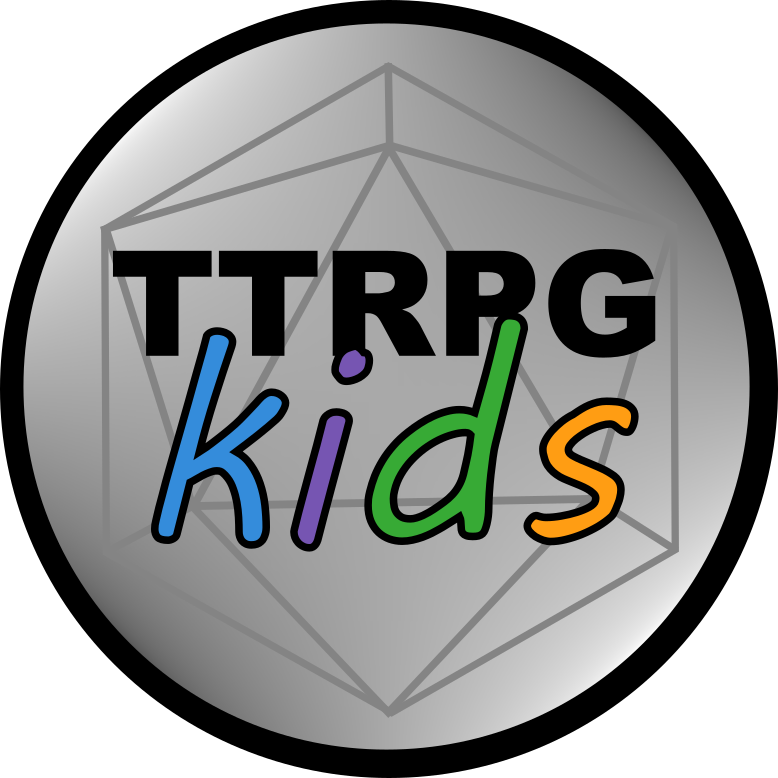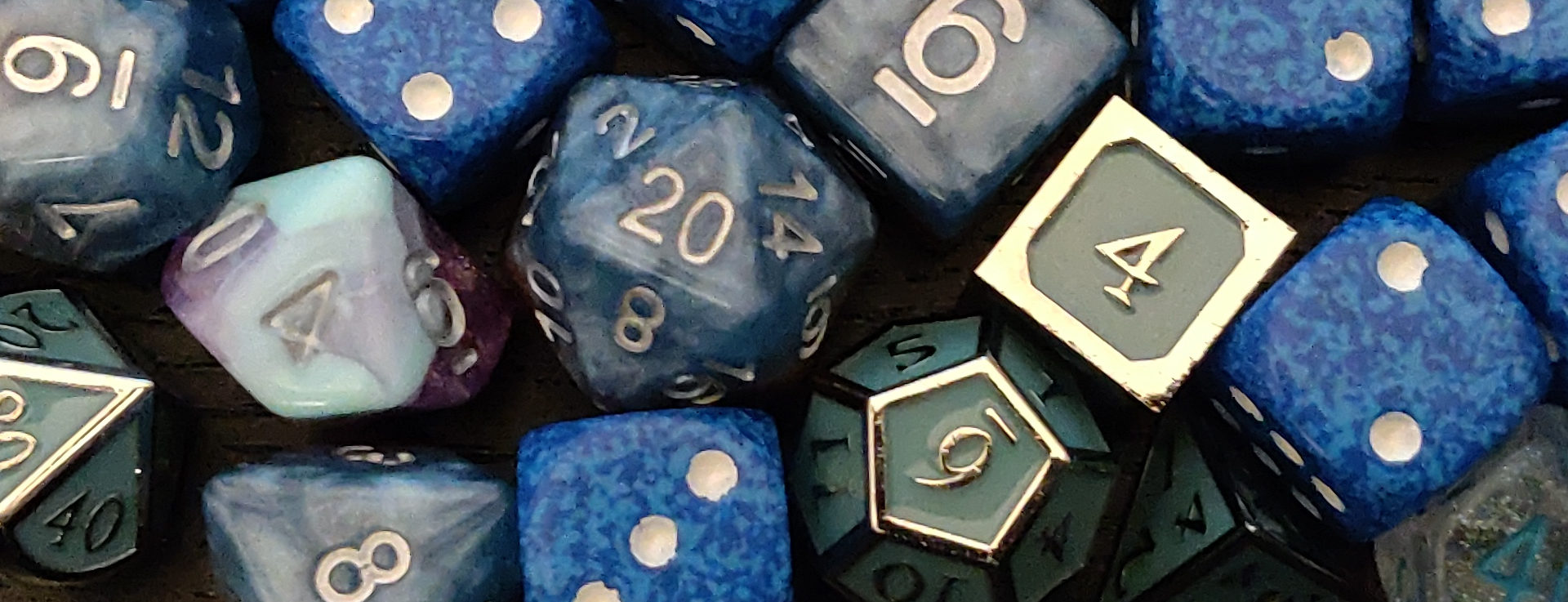Tips and Tricks: Starting tabletop RPGs… with my toddler!
This article is part of a collaboration with Michael Low from Luck of Legends! This particular post is one that I (Steph C) have written, and you can check out the partner post that Michael wrote here. Please also check out Michael’s classes, games, and blog at luckoflegends.com!
Jump to:
Start with the basics: interactive storytelling
I first decided to try TTRPGs with my kid (who was then 2 years old) based on a few success stories I had seen from other parents online. However… I was also, myself, fairly new to TTRPGs and was frankly a bit intimidated by the thought of introducing them to my toddler. So, I started out by keeping things simple – we just told a story together. No mechanics, no minis, no dice, just a story to test things out.
We told stories about a show and a movie my kid liked, we told stories about my kid’s stuffed toys, and we told stories about my kid going on adventures. These weren’t just stories though, they were stories we told together. I asked questions like, “How does Buzz Lightyear save Moana from the space dinosaur?” or “What do you say to the haywire robot?”
This gave my toddler a voice within the story and preped for basic role-playing during games later. It also helped practice talking and with speech development speech skills as well as building on critical thinking. We also bonded more – I took on a much more “fun parent” role instead of being the one in charge of keeping the meals and house in order.
It helped me too. Kids are GREAT at play, and my child picked this whole process up immediately, but I, as an adult, needed to break down a few barriers that had been put up throughout my life (blame it on myself, the education system, society, whatever you want… they were there) about coming up with stories just for fun AND about learning through play. This turned out to be really important for me facilitating games for my kid later that really engaged in those childhood interests. It got me to just… have fun with my child. I stopped and saw my kid’s face light up at new ideas, and I participated and experienced that too. We really sort of figured it out together, and that was part of what was wonderful about this journey.
When you start playing TTRPG’s with kids, it doesn’t have to be perfect and you don’t need to know all the rules from the start. You are both figuring the process out together – that’s OK and part of what is great about this. You have the opportunity to grow with your kid by exploring this hobby for the first time or in a new way. If you’re worried about mechanics, focus on the story first. If you aren’t sure how to come up with a story, try a pre-made one or ask your kid what they think (like I said, my kid picked it up probably faster than I did). Whatever you do though, try it. The worst that happens is you have a couple hours of “OK play” with your kid and then move on, but the best case… you get to share something special together and give your child an amazing set of creative tools to help them through life.
Picking and playing a game with young kids
Once you’ve decided to take the leap into running TTRPG’s with your young ones, you want to make sure that the game you’re playing with them is something that everyone can connect with on some level.
Setting:
If you’re used to playing fighting style TTRPG’s based in medieval societies governed by kings and dragons, check if your kids are into that. Mine was definitely OK with some medieval setting elements but was WAY more into stories about dinosaurs or spaceships. There was a very clear difference in enthusiasm once we switched topics. Look at what shows and books they are into and try incorporating a few of those setting points – I know my kid really appreciated the references.
Mechanics:
If this is everyone’s first time playing a TTRPG, some of the popular rules-heavy games can be a little difficult to jump into. It isn’t impossible, but it can present some challenges with learning mechanics. Fortunately, there are a lot of different systems available (including StoriesRPG and Starsworn, which I loved playing with my 3 year old) that have mechanics geared at different age groups. There are also a lot of rule-hacks for known systems (like D&D, Pathfinder, etc) if you do want to stick with your familiar system but bring it to a level that your kids can connect with.
Themes:
Some games are built on a lot of fighting and epic battles, but… I don’t really want my toddler picking up the “fight first, ask questions later” mentality. So, I make encounters revolving around someone who is hurt, looking for treasure, or finding a way through a storm. When we do play a game with combat (since we do a lot of playtesting for the TTRPGkids site), we typically spin it as scaring the baddies away or doing a non-violent battle (sparing, dancing, singing) until someone gets tired. Take a look at what your child sees in shows and what you think will help them grow in a positive way, and introduce those elements in the game.
Introducing education in play… for toddlers
Even during the interactive storytime phase, I started introducing small educational elements into the game with my child. My favorite early example is:
The same week that my kid decided not to eat dinner ever again, the dragon in our story *conveniently* had the same issue. This let us talk about that topic during playtime when my child was calm, and all of the discussion and consequences happened within the story. My kid asked questions to the dragon about why they didn’t want to eat and was able to process those big feelings about dinnertime. It turns out… the “problem” my kid was having was actually just being excited or overwhelmed about it being the first time the whole family met up after my spouse finished work.
It was like the clouds parted! Whenever my kid had an issue moving forward, we would role-play it out in our next game, and we were both able to process and talk through it without the pressure and frustration of the moment of conflict weighing us down.
I started using this for other elements too. We used our games to practice counting, deep breathing, letter recognition, identifying facial expressions, drawing, exercising… the list goes on. We are even working on sign language now with Inspirisles! I would just add this to the story for the day or pick a game that used one of these skills, and my kid would tackle it like any other game obstacle.
That was when it really clicked … play is the best way to learn. It isn’t flashcards or rote practice or being tested for a grade – it is the game that uses the flashcards (think how many Pokemon you can remember from your childhood card collection), it is honing a skill so you can defeat a challenge (you check your crops in Harvest Moon day after day to get the really BIG chicken coop), and it is earning that completionist trophy at the end of a video game so you know you earned it and did everything. We just need to make that game and that learning mesh.
Thank you for the collaboration!
Thank you again to Michael for collaborating on the dual article release! It’s been an honor to work with you, and I hope to continue with future collaborations!
As I said in the beginning, you can check out Michael’s article here, and please also check out Michael’s other works at:
If you liked this post, make sure to subscribe to the TTRPGkids monthly newsletter to stay up to date on the latest reviews, tips and tricks, game and podcast list updates, and more! Thank you for playing tabletop RPGs with your kids and sharing this awesome hobby with the next generation!



1 thought on “Tips and Tricks: Starting tabletop RPGs… with my toddler!”